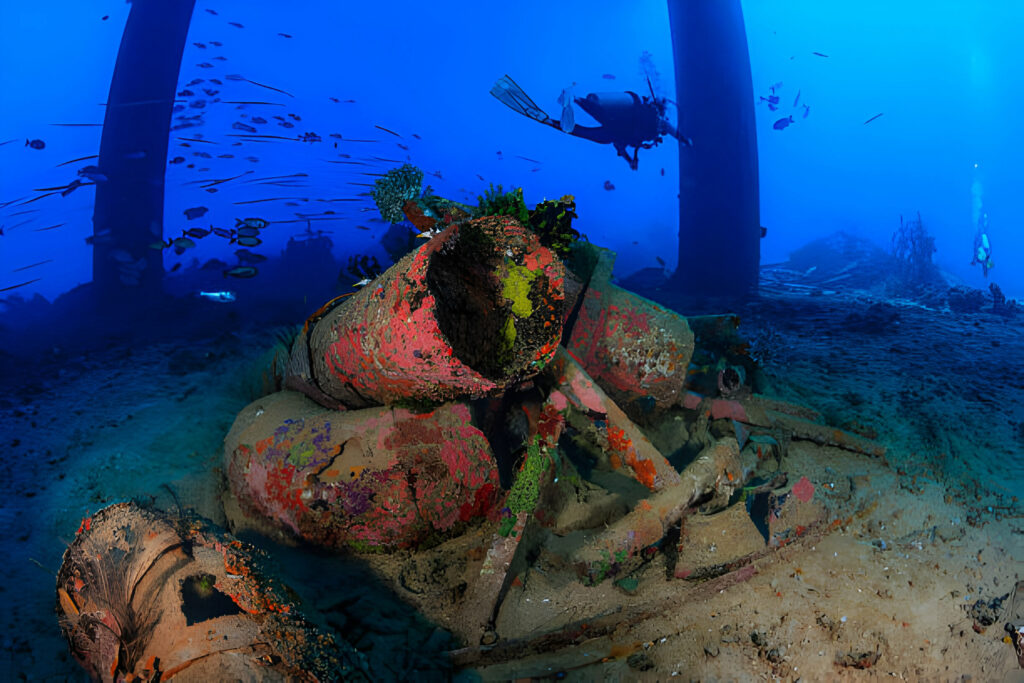
For centuries, the idea of humans living beneath the waves has captured the imagination of writers, architects, scientists, and explorers alike. From the mythic city of Atlantis to Jules Verne’s 20,000 Leagues Under the Sea, the ocean’s depths have long been envisioned as a mysterious frontier for human expansion. In recent decades, this fascination has taken on new urgency and relevance as population pressures, urban sprawl, climate change, and rising sea levels force planners and engineers to ask: Is underwater living a feasible solution to our future challenges?
As wild as it may sound, underwater cities are not purely science fiction anymore. While still far from large-scale implementation, the concept is gradually shifting from the pages of novels to the drawing boards of architects and engineers. Let’s explore how far we’ve come, where the science stands today, and what the future might hold for life beneath the ocean’s surface.
1. The Vision of Underwater Cities
At its core, the concept of an underwater city is a large-scale, human-inhabitable structure built below the ocean surface—either on the seabed, floating mid-water, or semi-submerged. These cities are designed to offer all the functions of urban life: residential housing, transportation systems, energy generation, food production, public infrastructure, and recreational areas—all enclosed in an environment that can withstand water pressure and isolate residents from the external ocean.
Envisioned underwater cities typically fall into one of three models:
- Fixed on the Ocean Floor: Dome-like or modular habitats anchored directly to the seabed, designed to resist extreme pressure and currents.
- Floating or Tethered Submerged Platforms: Suspended habitats connected to the seafloor by anchors or tethers, often buoyant and partially above water.
- Hybrid Structures: Combinations of submerged and surface-level sections that integrate marine and urban elements.
2. Why Consider Underwater Cities at All?
Several powerful drivers are compelling researchers and designers to explore the potential of underwater living environments:
A. Urban Overpopulation
With over 56% of the global population living in cities and the UN projecting an increase to nearly 70% by 2050, land availability—particularly in coastal regions—is reaching critical limits. Underwater cities could help relieve pressure on urban infrastructure and allow expansion into areas that would otherwise be unusable.
B. Climate Change and Sea-Level Rise
As sea levels rise, particularly affecting low-lying coastal cities and island nations, relocating communities to submerged, flood-resistant habitats may become a necessity rather than a choice. Living underwater could offer a long-term climate adaptation strategy.
C. Resource Access and Research
Living beneath the ocean allows scientists and resource managers to be closer to:
- Marine biodiversity hotspots
- Oil, gas, and mineral resources
- Deep-sea exploration zones
- New food sources (aquaculture and algae farming)
D. Technological Advancements
Modern advancements in pressure-resistant materials, autonomous robotics, AI systems, and underwater energy generation make submerged habitation more technically feasible than ever before.
3. The Enormous Engineering Challenges
Despite the excitement and potential, building underwater cities comes with formidable technical, economic, and environmental hurdles.
A. Extreme Water Pressure
Every 10 meters of water depth adds one atmosphere of pressure. At 100 meters, that’s ten times the pressure at sea level—equivalent to the weight of a small car pressing on every square inch. This means:
- Structures must be made of reinforced materials like titanium, special alloys, or high-compression concrete.
- Pressurization must be meticulously maintained, or structural failure could lead to catastrophic collapse or implosion.
B. Life Support Systems
An underwater city must function like a self-contained biosphere, managing:
- Air supply and oxygenation
- CO₂ removal
- Temperature and humidity control
- Waste recycling
These are technologies currently used in space stations and submarines, but scaling them to support entire communities would require major innovations.
C. Energy Production and Transmission
Energy is essential for powering life support, lighting, communication, and operations. Options include:
- Ocean Thermal Energy Conversion (OTEC)
- Wave and tidal energy
- Hydrogen fuel cells
- Underwater nuclear microreactors
- Floating solar platforms connected via underwater cables
D. Communication and Connectivity
Water impairs the transmission of traditional radio signals. Underwater cities would need fiber-optic cables, acoustic systems, or satellite relays for effective communication with the surface and the global internet.
E. Maintenance and Emergency Preparedness
Seawater is corrosive and constantly in motion. Maintenance would involve:
- Submersible drones and robotic systems
- Pressure-resistant seals and valves
- Redundant life-support systems
- Advanced evacuation and decompression infrastructure
4. Real-World Examples and Prototypes
While no full-scale underwater city exists yet, dozens of projects and prototypes have explored underwater habitation at smaller scales:
A. Conshelf (France, 1960s)
Led by ocean explorer Jacques Cousteau, Conshelf I, II, and III were early experimental underwater habitats. Divers lived and worked under the sea for weeks, proving that extended underwater habitation was biologically and psychologically feasible.
B. Aquarius Reef Base (Florida, USA)
Operated by Florida International University, this is the only active underwater research lab where scientists live for extended periods. It’s positioned 19 meters below the surface and is used for both marine studies and NASA astronaut training.
C. The Water Discus Hotel (Dubai Concept)
A concept for a luxury hotel with both above-water and submerged pods, showcasing a modular approach to underwater construction. Though still in the concept stage, the design reflects growing commercial interest in underwater tourism and habitation.
D. Ocean Spiral (Shimizu Corporation, Japan)
Perhaps the most ambitious concept to date. Ocean Spiral is a proposed underwater city of the future—a giant floating sphere with a spiral pathway extending 3,000–4,000 meters to the ocean floor, housing residents, researchers, and resource harvesting technologies. The project includes features such as energy plants, desalination systems, and food production facilities.
5. The Cost of Building Underwater
The primary reason why underwater cities don’t already exist is simple: cost.
- A permanent, pressure-safe underwater habitat could cost billions of dollars in materials, labor, technology integration, and long-term maintenance.
- Unlike land-based cities, everything from sewage management to fire safety requires custom systems built to operate in an alien environment.
- Insurance, regulation, and legal complexities further increase the burden of entry for governments or private investors.
6. Legal and Ethical Implications
Constructing human settlements under the sea also raises serious legal questions:
- Who owns the seabed? Under the United Nations Convention on the Law of the Sea (UNCLOS), nations have exclusive economic zones (EEZs) extending 200 nautical miles. Building underwater cities in international waters could lead to disputes over sovereignty and governance.
- Environmental responsibility: Any construction must avoid devastating marine habitats. Coastal reefs, migration paths, and breeding grounds are especially sensitive.
- Human health and rights: Would underwater residents have the same legal protections as land-based citizens? What about long-term health effects from life under pressure?
7. Looking Ahead: The Path Toward Reality
While we are unlikely to see vast cities beneath the sea in the next decade, the following developments could make it feasible within our lifetime:
- Modular construction: Small, self-contained units could be gradually connected into larger communities.
- AI-powered ecosystems: Smart life-support systems could automatically regulate internal conditions and flag problems.
- Marine agriculture and aquaponics: Food could be grown locally using recycled water and vertical farming.
- Undersea data centers: Already being tested by companies like Microsoft, showing that commercial infrastructure can operate beneath the waves.
These developments, combined with increased interest in climate-adaptive architecture, may lay the groundwork for the first generation of truly livable underwater communities by the mid- to late-21st century.
Conclusion: A Dream Within Reach
Underwater cities remain one of the boldest visions of future human habitation—bridging the gap between science fiction and engineering reality. While immense technological, economic, and environmental challenges remain, steady progress in marine construction, autonomous systems, and sustainable design is moving this vision closer to practical implementation.
For now, underwater cities represent more of a symbolic aspiration—a powerful reminder of humanity’s desire to explore, adapt, and survive in even the most extreme environments. But if history has taught us anything, it’s that today’s dreamers are often tomorrow’s engineers. Beneath the ocean waves, a new frontier may just be waiting for us to build it.
